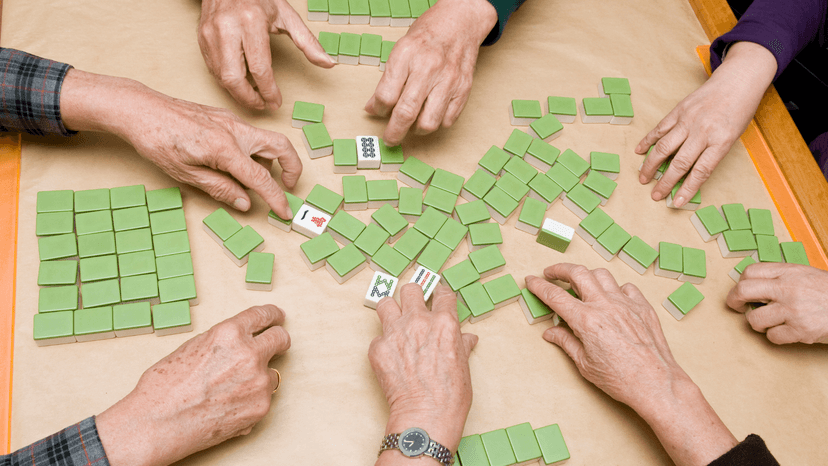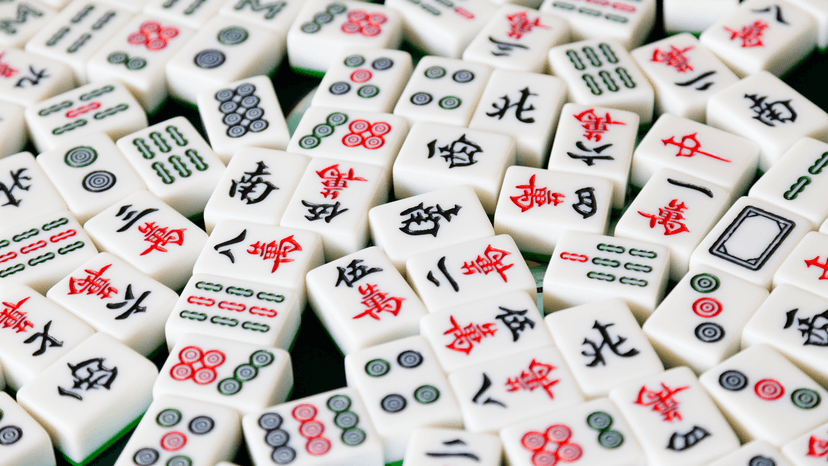Mahjong Tiles - All to Know

Mahjong is a unique and widely enjoyed game, and its popularity in New Zealand online casinos is growing. But what makes it so engaging? The answer lies in the fascinating Mahjong tiles themselves.
Many Kiwi players might still be unfamiliar with the intricacies of Mahjong tiles. This guide is designed to clear up any confusion and provide all the essential information you need. Let's dive straight in!
How Many Tiles Are in a Mahjong Set?
The number of tiles in Mahjong games can vary depending on regional variations. While some sets might include extra tiles like flowers or jokers, a standard set generally comprises at least 136 tiles, often 144. Some sets even come with blank tiles that can be used to replace any that might get broken or lost.
Understanding Mahjong Tile Categories
Mahjong tiles can be broadly categorized into six main groups: Suited Tiles, Red Tiles, Honor Tiles, Flower Tiles, Animal Tiles, and Joker Tiles.
Suited Tiles
Known as number tiles, suited tiles feature both a suit and a numerical rank, typically ranging from one to nine. There are three distinct suits, each historically linked to different forms of currency. Each rank and suit combination usually has four tiles, resulting in 108 suited tiles in total (36 tiles per suit). Tiles are referred to by their rank followed by their suit. The 'terminal' tiles are the ones and nines of each suit. You can form 'melds' using these suited tiles.
- Circles: The circle suit is represented by a symbol featuring a collection of circles. These circles historically symbolised the ancient Chinese copper coins known as 'Cash'.
- Bamboo: The bamboo suit is typically depicted as outlines of bamboo sticks, with the exception of the '1 Bamboo', which is often represented by a bird. In Japan, this '1 Bamboo' is sometimes called a 'sparrow', though it's more commonly depicted as a peacock. Early Mahjong sets might have shown a single string of coins with a red knot instead of a bird.
- Characters: This suit is represented by Chinese characters.
Red Tiles
Red tiles are a feature primarily found in Japanese Mahjong sets. Unlike their standard counterparts, they don't always have four duplicates and appear as red versions of tiles from various suits. The Red 5 tiles, inspired by the debut of the Red 5 Circle in the 1970s, later variations included Red 1s and 9s, though these are less common than Red 5s. Red 3s and 7s emerged even later. In some variations, a rare red-white dragon tile can also act as a wild card if specific conditions are met.
- These tiles can be optional and excluded from play.
- When a red tile is added to the game, one duplicate of its ordinary, non-red version is removed from play.
- Their presence can potentially increase your score.
- Since flower tiles are less commonly used in Japanese Mahjong, the 'Four Gentlemen' flower tiles are often omitted to make room for these red tiles.
Honor Tiles
Similar to suited tiles, Honor tiles are used to form melds. However, they do not possess a rank or suit. They are further divided into two distinct categories.
Winds
There are four types of Wind Tiles:
- East
- West
- North
- South
Dragons
There are three types of Dragon Tiles:
- Red: The traditional Chinese character for center or middle is written on a red tile. In sets intended for English speakers, the initial letter of the Wade-Giles may alternatively be represented by a black letter C in a tile corner. These tiles were absent from one of the earlier sets. Red Dragon, a classic Chinese character, may be seen on several tiles.
- Green: Even in sets where the Character tiles are printed in simplified Chinese, green is a tile with a traditional Chinese green character. Other sets, most notably American, substitute a green dragon for the character or an F in black in the tile's corner to indicate the initial letter of the translation. In the first sets, this tile wasn't present. The classic Chinese character Green Dragon may be seen on several tiles.
- White: Although most contemporary sets use tiles with a blue border like White Dragon to differentiate them from replacement tiles, white is a tile that can be without any marks, like White Dragon. A black letter B could also be included in the tile's center in English sets. These unmarked Japanese tiles are sometimes referred to as "tofu" in some Japanese mahjong groups.
Flower Tiles
In mahjong melds, Flower tiles are not utilized. These are put aside after being drawn, and the player then gets to draw again, but from a dead wall. These tiles frequently include stylized images of flowers in a variety of shades. Yet, there are also additional, non-floral motifs that differ from set to set.
Quarters
If a set has flower tiles, it often has two quartets of them, each with a different label's color and design. In ordinary Chinese sets, one quartet will have blue Arabic numbers, and the other group will have red Chinese numerals. Each quartet has four separate tiles that are each numbered from 1 to 4 or clearly labelled.
- Seats are assigned to numbers such as 1 = East, 2 = South, 3 = West, and 4 = North.
- If the number on the flowers equals the seat number, the winner's score is doubled.
- However, there are advantages to gathering a whole quartet, and in certain versions, gathering all the flowers results in a win right away.
- Several games do not include them or view them as optional, since they provide points for purely random events.
Animal Tiles
The player's seat is immediately matched by the animal tile, which is unnumbered flowers. These tiles are typically found in pairs and feature classic Chinese stories as their topics. If two tiles in a pair or all of the animals are gathered, payment is made right away. Thai and Malaysian sets for four players include four pairs of animal tiles, compared to two pairs in Singaporean sets.
Some of them are the following:
- Cat and Mouse
- Rooster and Centipede
- Caishen and Sycee
- Jiang Ziya and Fish
- Liu Haichan and Jin Chan
- Dragon and Flaming pearl
Joker Tiles
Subject to regional limitations, joker tiles can be used to substitute any suited or honor tile while assembling a hand. Certain variations of Southeast Asian and Chinese mahjong, particularly Shanghainese mahjong, occasionally include four jokers. Also, there are eight jokers in American Mahjong.
Common Unique Jokers:
- Circle joker
- Character joker
- Universal joker
- Red jokers
- Suit joker
- Dragon joker
- Wind joker
- Flower joker
- Honor joker
Rank Restricted Jokers:
- Terminal Joker: Replaces one or nine of any suit.
- 147 Joker: Replaces one, four, or seven of any suit.
- 258 Joker: Replaces two, five, or eight of any suit.
- 369 Joker: Replaces three, six, or nine of any suit.
Conclusion
Remembering everything can be a little confusing, but players can just start with the Mahjong Tiles meaning and then move forward. After reading, the players will be able to somewhat understand Mahjong Tiles as they will only be able to understand it fully when they are playing the actual game at top online casinos.
There are six different types of Mahjong Tiles, and all of them are interesting to know about. They have sub-categories, too, so it’s better to learn about them slowly.
FAQ
How many tiles are there in a Mahjong set?
A standard Mahjong set consists of 144 tiles. This includes 36 tiles in the Circle suit, 36 tiles in the Bamboo suit, 36 tiles in the Character suit, 16 Wind tiles, 12 Dragon tiles, and 8 Bonus tiles (4 Flowers and 4 Seasons).
How do you play Mahjong tiles?
The goal of Mahjong is to create matching sets and pairs. A pair consists of two identical tiles, while a set is either three or four identical tiles, or three consecutive tiles in the same suit. To win, a player needs to form four sets and one pair.
How many Mahjong tiles do players start with?
At the beginning of a game, all tiles are placed face down. The dealer receives 14 tiles, while the other players each receive 13 tiles.
What is the "Soap" tile in Mahjong?
The "Soap" tile refers to the White Dragon tile. In certain hand combinations, White Dragon tiles can be used as zero-value tiles.
What does "Chi" mean in Mahjong?
In Mahjong, players can make specific calls when a discarded tile completes a set or sequence. "Chi" is called when the player to your left discards a tile that completes a sequence with two tiles already in your hand. It's the first call a player can make in the game.







